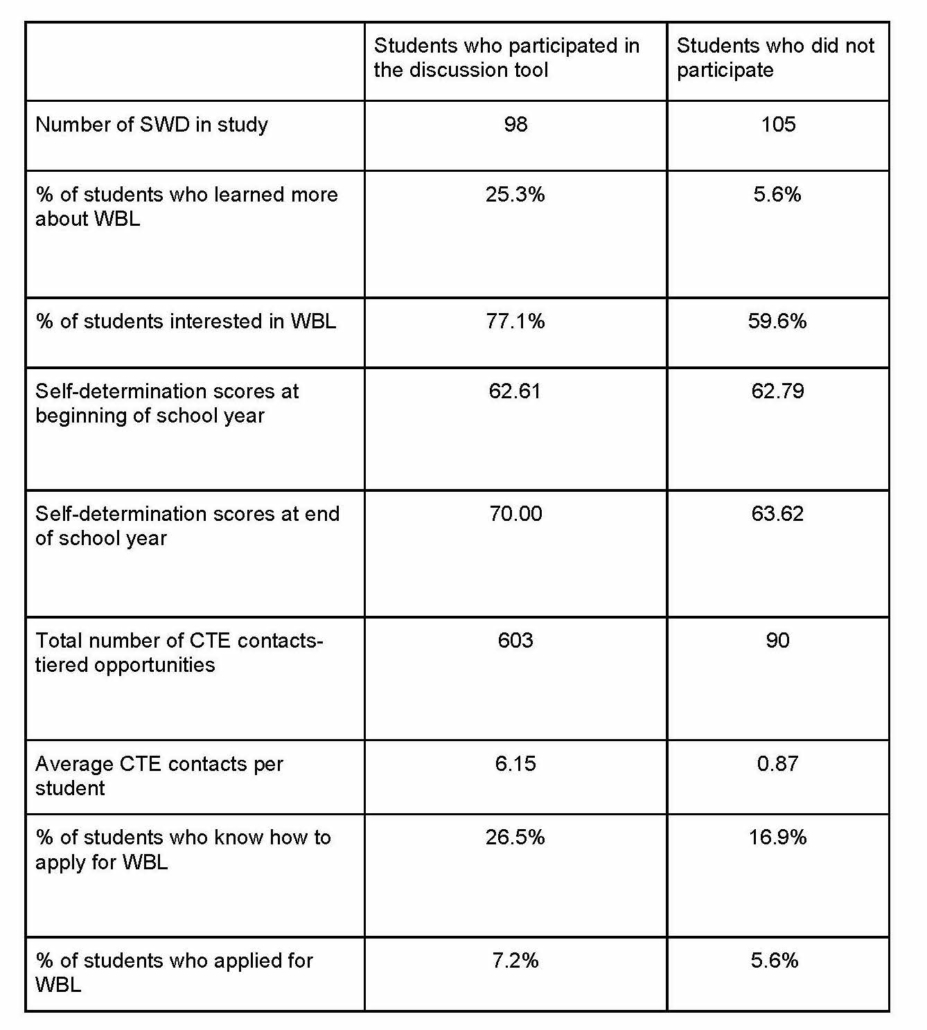Forward to the future! The Apply and Communicate for Transition Now Discussion Tool facilitates career exploration as secondary students plan for successful postsecondary transitions.
Interests, preferences, strengths and needs are identified and broken down into manageable steps — steps the student is willing to take and can realistically achieve. Students use their goals and narrative from this documented discussion as they continue to seek information. Development of an action plan will help them connect to resources.
A student’s action plan may include group or individual discussions with:
- Work-based learning instructors, CTE coordinators, tech college representatives
- Community resources such as TRIO First Generation, Gear Up, and other community partners
- Disability supports – such as vocational rehabilitation, WIOA, pre-employment transition service providers, and university disability services
The tool offers career exploration as students learn more about fields of interest and industry standards, and participate in inclusive recruitment activities. Students and facilitators use links to career and technical education (CTE) programs and support services that can prepare them for college and career success based on their interests, strengths and needs for access. The discussion tool combines an action plan with scripted open-ended questions that allow for effective conversations.
Via pre-recorded video (in large and small groups, or one on one), students with disabilities (SWD) engage in conversations about current skills and future criteria (e.g. employment requirements, course objectives, or minimum academic skills) using common language across multiple settings (e.g. school/CTE/SPED, work, postsecondary).
The discussion tool allows students, teachers and trained paraprofessionals to:
- Narrow interests and discover options for personalized learning and goal setting. Students explore CTE and work-based learning (WBL) opportunities to determine their preferred CTE Pathways. Before students can be included (access) in CTE options, they must be aware of those opportunities.
- Compose narrative statements to explain interests, strengths and needs as related to chosen careers. Through these discussions, students explore and explain their goals and identify supports needed for success toward those goals. Access occurs as the student is introduced to the resources and people who can help them achieve their desired employment and education goals.
- Set goals and take steps to prepare for options in interested careers. Once goals are determined (e.g. pass a math class, increase school attendance, apply for funding), students work with CTE and SPED teachers to identify and plan academic support (e.g. resources for textbooks to be read aloud, case managers notified of upcoming tests).
- Participate equitably in CTE courses, including WBL. Accommodations allow students to complete courses and meet industry standards, including passing licensing or certification requirements (e.g., proficiency, speed, accuracy, or minimum reading and math abilities) without being penalized for individual barriers such as disability or internet access.
The Apply and Communicate for Transition NowTM Discussion Tool allows CTE and SPED to hold honest and respectful conversations with SWD regarding expectations for entry into a chosen career pathway. Personalized instruction meets individual needs, helping students prepare for inclusive equitable access to CTE opportunities while ensuring they meet industry standards.
The tools and resources in the discussion tool are based on best practices from rigorous evidence-based research and practical applications.
A promising case study of students with IEPs and 504 plans
A total of 203 students with disabilities (SWD) in one large high school (enrollment ≃ 2,400) located in the Rocky Mountain west participated in a rigorous one-year randomized control research trial supported by the U. S. Department of Education (Dawson, 2018). The purpose: to determine the efficacy of the discussion tool during a single year.
Results were very positive.
Those in the intervention group averaged six opportunities to learn about CTE and support services, and to ask questions. Trained facilitators led SWD through program options and personalized exploration activities to each students interests. As a result, SWD were more likely to be interested and engaged. Self-determination scores increased more than seven points for those who participated with the discussion tool. Those not using the discussion tool saw an increase of less than one point.
A community resource sheet was developed to help CTE and SPED teachers discuss with students, parents and other key stakeholders (see part two, next week, for a downloadable template).
Access increase significantly, as measured by the number of contacts with CTE and community resources (p=.02). A higher percentage of SWD reported they have knowledge of how to apply, or they applied for, WBL; see outcomes. Finally, students who used the discussion tool reported more helpful and positive opportunities.
Outcomes

CTE teachers and administrators provide the options and standards needed for students to make decisions; SPED and counselors provide the resources needed for academic success among SSP. The discussion tool relies heavily on regular discussions to ensure students understand what their strengths and needs are in relation to industry standards. Repeated career exploration and goal setting helps to build relationships of trust and encourages the student to achieve.
Conclusion
When school staff collaborate using a multi-tier system of support and universal design for learning, they provide SSP with strategies to overcome barriers to participate in high-quality CTE programs. Inclusive recruitment includes integrated career development, helping them connect with support services to maximize the opportunity for success as students work to meet industry standards.
How can your school can use shared conversations? How can SSP — and all students — in your school or district benefit from shared community resource information? The answers to these questions can help ensure inclusion, access, equity and diversity in your high-quality CTE program.
Still to come:
- Part two will discuss how to leverage our results for success in your setting.
- Part Three will discuss how it all applies to Perkins V.
Shirley Dawson, Ph.D., is an associate professor at Weber State University. She researches and teaches courses in special education law, transition planning, and teacher development. Email:
Melanie Allen, M.Ed, is a school special education teacher. She helps students and their parents explore their career options, determine goals, and facilitates school collaboration and interagency connections. Email:
Adam King, M.S., is an assistant principal in Davis School District. He has also worked as a special education teacher and district SPED/504 coordinator.
The research reported for 2018–19 is supported by the Institute of Education Sciences, U.S. Department of Education, through Grant R324L180011 to Weber State University. The opinions expressed are those of the authors and do not represent views of the Institute or the U.S. Department of Education.







